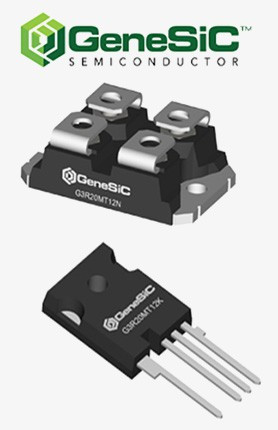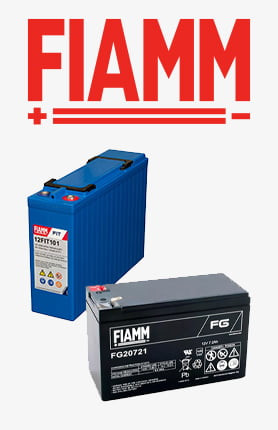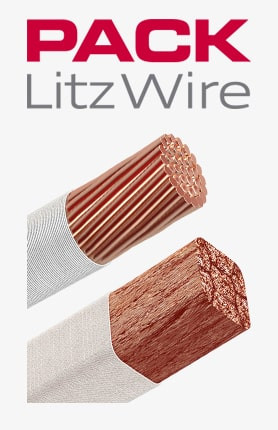Jūs turite būti prisijungę
-
sugrįžtiX
-
Komponentai
-
-
Category
-
Puslaidininkiai
- Diodai
- Tiristoriai
-
Elektroizoliuoti moduliai
- Elektrai izoliuoti moduliai | VISHAY (IR)
- Elektrai izoliuoti moduliai | INFINEON (EUPEC)
- Elektrai izoliuoti moduliai | Semikronas
- Elektrai izoliuoti moduliai | POWEREX
- Elektrai izoliuoti moduliai | IXYS
- Elektrai izoliuoti moduliai | POSEICO
- Elektrai izoliuoti moduliai | ABB
- Elektrai izoliuoti moduliai | TECHSEM
- Eikite į subkategoriją
- Lygintuviniai tilteliai
-
Tranzistoriai
- Tranzistoriai | GeneSiC
- SiC MOSFET moduliai | Mitsubishi
- SiC MOSFET moduliai | STARPOWER
- „ABB SiC MOSFET“ moduliai
- IGBT moduliai | MITSUBISHI
- Tranzistorių moduliai | MITSUBISHI
- MOSFET moduliai | MITSUBISHI
- Tranzistorių moduliai | ABB
- IGBT moduliai POWEREX
- IGBT moduliai INFINEON (EUPEC)
- Silicio karbido puslaidininkiniai elementai
- Eikite į subkategoriją
- Valdikliai
- Galios blokai
- Eikite į subkategoriją
- Elektrinių dydžių keitikliai
-
Pasyvūs komponentai (kondensatoriai, rezistoriai, saugikliai, filtrai)
- Rezistoriai
-
Saugikliai
- ABC ir AGC serijos miniatiūriniai saugikliai elektronikai
- Greitaeigiai cilindriniai saugikliai
- Uždelsimo elementai su GL/GG ir AM charakteristikomis
- Ultragreiti intarpai - saugikliai
- Didžiosios Britanijos ir JAV standartų greitaeigiai saugikliai
- Europos standarto greitaeigiai saugikliai
- Saugikliai geležinkeliui
- Aukštos įtampos saugikliai
- Eikite į subkategoriją
-
Kondensatoriai
- Kondensatoriai varikliams
- Elektrolitiniai kondensatoriai
- Snubbers tipo kondensatoriai
- Galios kondensatoriai
- Kondensatoriai DC grandinėms
- Kondensatoriai galios kompensavimui
- Aukštos įtampos kondensatoriai
- Kondensatoriai indukciniam kaitinimui
- Impulsiniai ir energijos kaupimo kondensatoriai
- DC LINK kondensatoriai
- AC / DC grandinių kondensatoriai
- Eikite į subkategoriją
- Slopinimo tinklo filtrai
- Superkondensatoriai
- Apsauga nuo viršįtampių
- TEMPEST spindulių aptikimo filtrai
- Viršįtampių ribotuvas
- Eikite į subkategoriją
-
Relės ir kontaktoriai
- Relių ir kontaktorių teorija
- Trijų fazių puslaidininkinės AC relės
- Puslaidininkinės DC relės
- Reguliatoriai, valdikliai ir jų priedai
- Soft starteriai (minkšto paleidimo įrenginiai) bei reversiniai kontaktoriai
- Elektromechaninės relės
- Kontaktoriai
- Rotaciniai jungikliai
-
Vienos fazės puslaidininkinės AC relės
- AC vienfazės puslaidininkinės relės 1 | D2425 | D2450 serijų
- AC vienfazės puslaidininkinės relės CWA ir CWD serijų
- AC vienfazės puslaidininkinės relės CMRA ir CMRD serijų
- AC vienfazės puslaidininkinės relės PS serijos
- AC puslaidininkinės dvigubos ir keturgubos relės D24 D, TD24 Q, H12D48 D serijų
- Vienfazės puslaidininkinės relės gn serijos
- AC vienfazės puslaidininkinės relės CKR serijos
- AC vienfazės relės DIN bėgiams ERDA ir ERAA serijų
- Vienfazės kintamosios srovės relės, skirtos 150A srovei
- Dvigubos kietojo kūno relės, integruotos su radiatoriumi DIN bėgiui
- Eikite į subkategoriją
- Vienos fazės puslaidininkinės AC relės spausdinimo plokštėms
- Interfejsų relės
- Eikite į subkategoriją
- Indukciniai elementai
- Radiatoriai, varistoriai, termo apsauga
- Ventiliatoriai
- Kondicioneriai, elektros spintų aksesuarai, aušintuvai
-
Baterijos, įkrovikliai, buferiniai maitinimo šaltiniai ir keitikliai
- Baterijos, įkrovikliai - teorinis aprašymas
- Ličio jonų baterijos. Individualios baterijos. Baterijų valdymo sistema (BMS)
- Akumuliatoriai
- Akumuliatorių įkrovikliai ir priedai
- UPS atsarginis maitinimo šaltinis ir buferiniai maitinimo šaltiniai
- Fotoelektros keitikliai ir priedai
- Energijos kaupimas
- Kuro elementai
- Ląstelės litio-joninės
- Eikite į subkategoriją
-
Automatikos komponentai
- Spiralift keltuvai
- Futaba dronų dalys
- Galiniai jungikliai, mikrojungikliai
- Jutikliai, keitikliai
- Pirometrai
- Skaitikliai, laiko relės, paneliniai matuokliai
- Pramoniniai apsaugos įrenginiai
- Šviesos ir garso signalizacija
- Terminio vaizdo kamera
- LED švieslentės
- Valdymo aparatūra - mygtukai ir jungikliai
- Eikite į subkategoriją
-
Laidai, pynės, laidų apsauginės žarnos, lankstūs sujungimai
- Laidai
- Kabelių įvadai ir movos
- Daugiagisliai laidai
-
Kabeliai ekstremalioms sąlygoms
- Kompensaciniai ir prailginimo kabeliai
- Laidai termoporoms
- PT jutikliams prijungimo laidai
- Daugiagysliai laidai temp. -60C iki +1400C
- Vidutinės įtampos kabeliai
- Uždegimo laidai
- Šildymo laidai
- Viengysliai laidai temp. -60C iki +450C
- Geležinkelio kabeliai
- Šildymo kabeliai Ex zonoms
- Eikite į subkategoriją
- Apsaugos vamzdeliai
-
Pintinės
- Plokščios pintinės
- Apvalios pintinės
- Plokščios labai elastingos pintinės
- Apvalios labai elastingos pintinės
- Cilindro formos vario pintinės
- Vario cilindrinės pintinės su apsauga
- Elastingos įžeminimo juostos
- Cinkuoto ir nerūdijančio plieno cilindrinės pintinės
- PCV izoliuotos vario pintinės - temperatūra iki 85 C
- Plokščios aliuminio pintinės
- Sujungimo komplektas - pintinės ir vamzdeliai
- Eikite į subkategoriją
- Aksesuarai geležinkeliams
- Kabelių antgaliai
- Lanksčios izoliuotos šynos
- Daugiasluoksnės lanksčios šynos
- Laidų pravedimo sistemos (PESZLE)
- Eikite į subkategoriją
- Žiūrėti visas kategorijas
-
Puslaidininkiai
-
-
- Tiekėjai
-
Pritaikymų sąrašas
- CNC staklės
- Energetika
- Energy bank
- Indukcinis kaitinimas
- Įranga ir komponentai sprogimo pavojaus zonoms (Ex)
- Kasyklos, metalurgijos ir liejimo pramonė
- Laboratoriniai ir moksliniai matavimai
- Maitinimo šaltiniai (UPS) ir lygintuvinės sistemos
- Medienos džiovinimo ir apdirbimo mašinos
- Nuolatinės ir kintamos srovės pavaros (keitikliai)
- Paskirstymo, valdymo ir telekomunikacijos spintų įranga
- Plastmasių liejimo mašinos
- Poligrafija
- Pramoninė apsaugos įranga
- Pramoninė automatika
- Suvirinimo aparatai
- ŠVOK automatika
- Temperatūros matavimas ir nustatymas
- Tramvajų ir traukinių pavaros
- Varikliai ir transformatoriai
-
Montavimas
-
-
Induktoriai
-
-
Indukciniai įtaisai
-
-
Aptarnavimas
-
- Kontaktai
- Zobacz wszystkie kategorie
Hazardous areas & explosive atmospheres - basic principles

Explosive atmosphere – a space in which there may be an explosive mixture of flammable substances with air or other oxidizing gases, with a concentration between the lower and upper explosion limits.
Non-explosive atmosphere - a space in which no explosive gaseous atmosphere is expected to occur in quantities that require special preventive measures relating to the design, installation and use of devices.
Explosion hazard room - a room where an explosive mixture may develop, formed from the release of such amount of flammable gases, vapors, mists or dusts, the explosion of which could cause an increase in pressure in this room exceeding 5 kPa.
Explosive atmosphere - a mixture of flammable substances in the form of gases, vapors, mists or dusts with air under atmospheric conditions, in which, when ignited, combustion spreads over the entire unburned mixture.
Explosion hazard - it is understood as the possibility of flammable gases, vapors of flammable liquids, dusts or fibers of flammable solids, under various conditions, mixtures with air, which explode under the influence of an ignition initiating factor (spark, electric arc or exceeding the spontaneous ignition temperature), that is, they burn rapidly with an increase in pressure.
Explosive mixture - a mixture of flammable gases, vapors of flammable liquids, dusts or fibers with air, oxygen or other gases-oxidants, which under the influence of a factor that initiates its ignition, e.g. a spark, electric arc or self-ignition temperature, explodes, i.e. burns violently in combination with high pressure build-up.
Lower explosion limit (LEL) - it is the lowest concentration of fuel in a flammable mixture, below which ignition of the mixture is not possible under the influence of the initiating agent and further spontaneous flame spreading under specified test conditions.
Upper explosion limit (UEL) - it is the highest concentration of fuel in a combustible mixture, above which ignition of the mixture is not possible under the influence of the initiating agent and further spontaneous flame propagation under specified test conditions.
Flash point - in the case of a flammable liquid, it is the lowest temperature at which a vapor-air mixture of a specified concentration is formed above its surface, capable of being ignited by an energy stimulus under specified test conditions.
Auto-ignition temperature - this is the lowest temperature at which ignition of a flammable substance occurs as a result of contact with a hot surface or as a result of the thermal influence of this surface (without the participation of an external flame or spark).
Maximum surface temperature - the highest temperature that can be reached during operation of any part or surface of an electrical device, in the most unfavorable (but acceptable) conditions that can initiate ignition of the surrounding explosive atmosphere.
Zones - potentially explosive atmospheres are classified into zones according to the frequency and duration of a gaseous explosive atmosphere, as follows:
- Zone 0 - a place where an explosive atmosphere containing a mixture of flammable substances, in the form of gas, vapor or mist with air, occurs continuously or for long periods or frequently. (> 1000 h / year). Basically these conditions occur inside containers, piping and tanks when they occur;
- Zone 1 - a place where an explosive atmosphere containing a mixture of flammable substances, in the form of gas, vapor or mist with air, can occasionally occur in normal operation (> 10 h / yr to <1000 h / year). This zone may include:
- the immediate vicinity of zone 0
- the immediate vicinity of the raw material supply points
- immediate vicinity of the filling and emptying points
- immediate vicinity of damage-sensitive devices and protective systems
- immediate vicinity of inadequately secured seals
- Zone 2 - a place where an explosive atmosphere containing a mixture of flammable substances, in the form of gas, vapor or mist with air, does not occur in normal operation, and if it does occur, it is short-lived (<10 hours / year). This zone may include, but is not limited to, the places surrounding zone 0 or zone 1;
- Zone 20 - area with an explosive atmosphere in the form of a cloud of combustible dust in the air it occurs constantly, over a long period of time or frequently;
- Zone 21 - area with an explosive atmosphere in the form of a cloud of combustible dust in the air, it can sometimes occur during normal operation;
- Zone 22 - area with an explosive atmosphere in the form of a cloud of combustible dust in air, it does not occur during normal operation, and if it does, it lasts for a short period;
Emission – definitions:
- emission source - a point or place from which flammable gas, flammable vapor or flammable liquid may be released into the atmosphere so that it may form live a gaseous explosive atmosphere.
- emission levels - three emission levels are distinguished, ranked according to the decreasing probability of a gaseous explosive atmosphere:
- continuous emission;
- first stage of emission;
- second stage of emission.
An emission source may be classified into one of the emission steps or a combination of more than one.
- continuous emission - emission that occurs continuously or can be expected to occur over long periods.
- first stage of emission - An emission that can be expected to occur periodically or occasionally during normal operation.
- second stage of emission - an emission that cannot be expected to occur under normal operating conditions, and if it does occur, it may only occur rarely and for short periods only.
- emission efficiency - the amount of flammable gas or vapor released per unit time from the emission source.
- normal operation - a situation during which the device operates within its rated parameters.
Ventilation - definitions:
- Degree of ventilation:
- high - is able to reduce the concentration at the source of the emission almost immediately, resulting in a concentration below the lower explosive limit;
- medium - is able to influence the concentration, which results in a stable situation, in which the concentration outside the zone, during the duration of the emission, is below the lower explosive limit and the explosive atmosphere does not remain in excess after the end of the emission;
- low - it is not able to influence the concentration during the emission period and / or it cannot protect against excessive retention of the flammable atmosphere after the end of emission;
- Availability of ventilation:
- good - ventilation is almost always present;
- sufficient - ventilation during normal operation. Breaks are allowed on condition that they occur rarely and for short periods;
- poor - ventilation that does not meet the requirements of even a poor availability, should not be taken into account as contributing to the ventilation of the space;
Type A openings - open passages and wall openings;
Type B openings - openings normally closed;
C-type openings - openings are normally closed and sealed;
D-type openings - normally closed openings that can be opened only by special means - tools;
Fire load density (MJ/m2) – thermal energy, expressed in megajoules (MJ), which may arise from the combustion of combustible materials in a room, fire zone or solid material landfill per unit area of the facility, expressed in square meters (m2);
Fire hazard - a set of factors influencing the emergence and spread of fires, and thus the safety of human and animal life or property;
Technical means of fire protection - technical devices, equipment, installations, as well as construction solutions to prevent the occurrence and spread of fires;
Fire zone - a building or a part thereof separated from other buildings or other parts of the building by means of fire separation, or by free terrain strips. These protections are designed to prevent the fire from spreading outside or inside the room;
Fire-hazardous work - renovation and construction works related to the use of open fire, cutting with the generation of mechanical sparks and welding;
Evacuation conditions - the possibility of undertakings and technical and organizational measures ensuring a quick and safe exit from a fire hazard zone or zone;
Fire-hazardous materials - gases, flammable liquids with a flash point below 55ºC, materials which, in contact with water, emit flammable gases, materials that ignite spontaneously in air, explosives and pyrotechnics, materials that spontaneously decompose or polymerize, and materials that are prone to spontaneous combustion.
Minimum auto-ignition temperature of an explosive atmosphere - the auto-ignition temperature of a flammable gas or vapor of a flammable liquid, or the minimum auto-ignition temperature of a dust cloud under specified test conditions.
Auto-ignition temperature (flammable gas or flammable liquid) - the lowest temperature of the heated walls of the vessel, determined under the specified test conditions, in which ignites a flammable substance in the form of a gas or vapor mixture with air.
Dust cloud minimum self-ignition temperature - the lowest temperature of the hot surface at which the most combustible dust-air mixture ignites under the specified test conditions.
Minimum self-ignition temperature of the dust layer - the lowest temperature of the hot surface at which the dust layer ignites under the specified test conditions
Relative gas or vapor density - the density of a gas or vapor related to the density of air at the same pressure and temperature (in the case of air, it is equal to 1.0).
Combustible material - material that is combustibleby itself or is capable of producing a flammable gas, combustible vapor or combustible mist.
Flammable liquid - A liquid capable of generating flammable vapor under any foreseeable operating conditions.
Combustible gas or flammable vapor - a gas or vapor which, when mixed in some proportion with air, creates an explosive gaseous atmosphere.
Combustible mist - droplets of a combustible liquid, dispersed in the air in such a way that an explosive atmosphere is created.
Flash point - the lowest temperature of a liquid at which, under certain standardized conditions, the liquid gives off vapor in such quantities that it is capable of forming a flammable vapor-air mixture.
Boiling point - the temperature at which a liquid boils at an ambient pressure of 101.3 kPa (1013 mbar).
Vapor pressure - pressure exerted in the equilibrium state of a solid or liquid with its own vapor. It depends on the type of substance and temperature.
Auto-ignition temperature of an explosive gas atmosphere - the lowest temperature of a heated surface at which, under certain conditions, ignition of a flammable substance in the form of a gas or vapor mixture with air may occur.
Related posts
 Now available – DC/DC converters from PREMIUM
Now available – DC/DC converters from PREMIUM
 New release in DACPOL lighting for lathes – Kira covers
New release in DACPOL lighting for lathes – Kira covers




Leave a comment